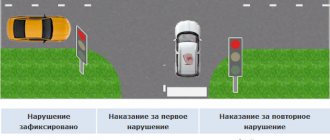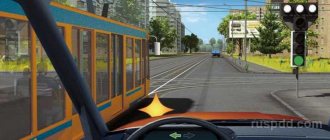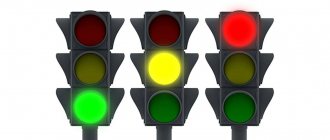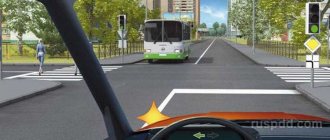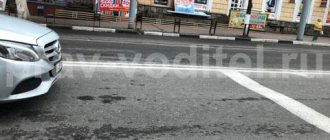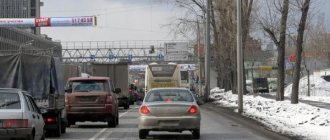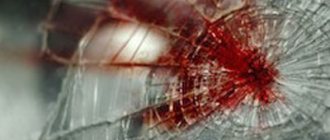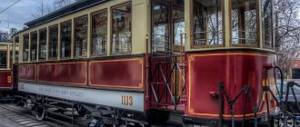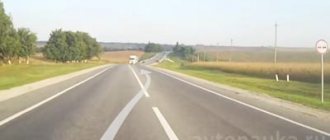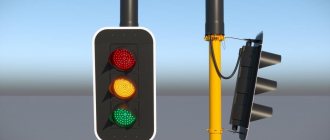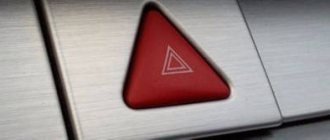What is red light therapy?
Red light therapy (RLT) is a controversial therapeutic modality that uses low-level red wavelengths of light to treat skin problems such as wrinkles, scars, and stubborn wounds, among other conditions.
In the early 1990s, scientists used RLT to grow plants in space. Scientists found that intense light from red light-emitting diodes (LEDs) promoted the growth and photosynthesis of plant cells.
Red light was then studied for its potential medical applications, more specifically to see if RLT could increase energy inside human cells. The researchers hoped that RLT could be an effective way to treat muscle wasting, slow wound healing and bone density problems caused by weightlessness during space travel.
You may have heard of red light therapy (RLT) by other names, which include:
- photobiomodulation (PBM)
- low level light therapy (LLLT
- soft laser therapy
- cold laser therapy
- biostimulation
- photon stimulation
- low power laser therapy (LPLT)
When RLT is used with photosensitizing drugs, it is called photodynamic therapy. In this type of therapy, light only serves as an activating agent for the drug.
There are many different types of red light therapy. Red light beds in salons are said to help reduce cosmetic skin problems such as stretch marks and wrinkles. Used in medical settings, red light therapy can be used to treat more serious conditions such as psoriasis, slow-healing wounds, and even chemotherapy side effects.
Although there is ample evidence that RLT may be a promising treatment for certain conditions, there is still much to be learned about how it works.
Dream Interpretation - Color
How to install the clutch disc correctly and which side?
even this can be learned White color - symbolizes both sorrow and purity, purity, clarity, connection with higher powers. Virtue and divinity are often associated with this color. Red color is a symbol of strength, power, authority. Red color can be a sign not only of passionate love and health, but also danger, prohibition. Yellow and orange - these colors are the color of the setting sun. Historically, a symbol of postponement of affairs is betrayal. Green is the color of optimism and hope. It has all the positive color associations blue is the color of magic. Some interpreters believe that dreams colored in blue promise only big troubles. However, the blue color symbolizes femininity, fidelity, poise, meekness, eternity, harmony and peace. It is also constancy, perseverance, perseverance, devotion, dedication, seriousness and rigor. In Christian symbolism, rich purple is the color of spiritual suffering, renunciation from the worldly. Since ancient times, it has been considered a symbol of eternity, connecting the present with the past and future. Black color is most often sadness and grief, bad luck. Black color is also associated with mystery and excessive sexuality.
Signalized intersection and signalized crossing
Is it possible to mix antifreeze: consequences of improper mixing
Let's turn to clause 4.4 of the traffic rules:
A pedestrian crossing or intersection is controlled only if the traffic is regulated by a traffic controller (police officer) or a working traffic light.
Please note that if the yellow signal is constantly flashing at the traffic light, then such an intersection is unregulated
Traffic controller signals for pedestrians
The traffic controller automatically turns any intersection into a regulated one. If there is a traffic controller at the intersection, then you need to be guided by his gestures, and not by the traffic lights!
The rules provide for 3 possible traffic controller gestures:
| Gesture | Pedestrian implications |
| right hand raised above head | No Pedestrians |
| right arm extended forward | Pedestrian movement is permitted from behind the traffic controller |
| arms extended in different directions in the shape of the letter T | Pedestrian movement is permitted from the chest and from the back of the traffic controller |
Let's look at a few examples.
In the figure, the right hand of the traffic controller is extended forward, therefore pedestrians can only cross the road from the side of the policeman’s back.
Please note that this gesture allows the red car to turn right, i.e. the trajectories of a pedestrian and a car intersect
In this case, the car must give way (clause 13.1 of the Rules). However, the pedestrian should be careful, because... the driver may not know the rules or simply not notice the pedestrian.
In the figure, the traffic controller’s arms are extended to the sides, i.e. Pedestrians are allowed to move from both the chest and the back.
At the same time, both orange and blue cars have the right to turn right, giving way to pedestrians. So be careful.
Since many pedestrians do not know the traffic controller’s gestures, police officers in practice can use additional gestures. For example, they allow pedestrians to move by simply waving their hand in the right direction.
At what traffic light can you cross the road?
A traffic light at an intersection makes the intersection controllable only if it operates in the red-amber-green mode (and not in the flashing yellow signal mode).
A special pedestrian traffic light, on which there are images of little men, allows the movement of pedestrians if the traffic light is green, and prohibits it if the traffic light is red. Crossing a red light is a violation of traffic rules, for which a pedestrian may be subject to an administrative fine.
If at an intersection there is only a car traffic light and no pedestrian traffic light, then you need to be guided by the signals of the car traffic light. But how to be guided is not specified in the rules.
Therefore, everything is left to the discretion of the pedestrian. Some pedestrians cross the road when the signal in the right direction is green, while others cross when the signal for all cars is red. In general, the situation is controversial, so be careful. Fortunately, there are fewer and fewer such intersections over time.
How to let pedestrians pass at an intersection without a pedestrian crossing in 2021
And again we return to pedestrians, today the topic of the review is how to let pedestrians pass at an intersection in the absence of a pedestrian crossing. In the previous post, we talked about how to properly let pedestrians pass at an unregulated pedestrian crossing. This time, we will talk about the responsibilities of drivers and pedestrians at uncontrolled intersections, in the absence of a pedestrian crossing. In the traffic rules, this situation is described in detail and clearly. But unfortunately, in reality, we are sometimes not sure what the right thing to do is. Some road users do not interpret the Rules entirely correctly.
Let's start by addressing the Rules of the Road and the responsibilities of pedestrians.
“Pedestrian crossing” is a section of the roadway, tram tracks, marked with signs 5.19.1, 5.19.2 and (or) markings 1.14.1 and 1.14.2 (hereinafter the numbering of road markings is given in accordance with Appendix 2) and allocated for pedestrian traffic across the road. In the absence of markings, the width of the pedestrian crossing is determined by the distance between signs 5.19.1 and 5.19.2.
4.3. Pedestrians must cross the road at pedestrian crossings, including underground and overground ones, and in their absence, at intersections along sidewalks or roadsides .
At a controlled intersection, it is allowed to cross the roadway between opposite corners of the intersection (diagonally) only if there are markings 1.14.1 or 1.14.2 indicating such a pedestrian crossing.
If there is no crossing or intersection in the visibility zone, it is allowed to cross the road at right angles to the edge of the roadway in areas without a dividing strip and fences where it is clearly visible in both directions.
Clause 4.3 of the Rules states what a pedestrian should do when crossing the road at an intersection in the absence of a pedestrian crossing. Namely, in the absence of a pedestrian crossing, the pedestrian is obliged to cross the roadway along the line of sidewalks or curbs. It is necessary to note that in the Traffic Rules there is not a word that the lines of sidewalks or curbs at intersections are equated to pedestrian crossings. If it were otherwise, then the next paragraph would have a different content.
4.5. At unregulated pedestrian crossings, pedestrians can enter the roadway (tram tracks) after assessing the distance to approaching vehicles, their speed and making sure that the crossing will be safe for them. When crossing the road outside a pedestrian crossing, pedestrians, in addition, must not interfere with the movement of vehicles and exit from behind a standing vehicle or other obstacle that limits visibility without making sure that there are no approaching vehicles.
But here, unlike crossing the road at a pedestrian crossing, in addition to the need to make sure that the crossing is safe, the Rules directly oblige the pedestrian not to interfere with the movement of vehicles. Therefore, it is not entirely clear what some road users are guided by when they equate the lines of sidewalks or roadsides to a pedestrian crossing.
The photo shows an intersection with no pedestrian crossings. At the specified intersection, pedestrians are required to cross the road along the sidewalk line in accordance with the requirements of paragraph 4.3 of the Rules.
Above, we examined the responsibilities of pedestrians when crossing the road outside a pedestrian crossing. Let us once again highlight the most important requirement of paragraphs 4.3 and 4.5 of the Rules - pedestrians, in the absence of a pedestrian crossing at the intersection, must cross the road along the sidewalks or curbs and must not interfere with the movement of vehicles.
Before moving on to the responsibilities of drivers when driving through intersections where there are no pedestrian crossings, let us remember the basic requirements of the Rules, which oblige them to give way to pedestrians.
14.1. The driver of a vehicle approaching an unregulated pedestrian crossing* is obliged to give way to pedestrians crossing the road or entering the roadway (tram tracks) to cross.
*The concepts of a controlled and unregulated pedestrian crossing are similar to the concepts of a controlled and unregulated intersection established in paragraph 13.3. Rules
8.3. When entering the road from the adjacent territory, the driver must give way to vehicles and pedestrians moving along it, and when leaving the road - to pedestrians and cyclists whose movement path he crosses.
14.5. In all cases, including outside pedestrian crossings, the driver is obliged to give way to blind pedestrians signaling with a white cane.
14.6. The driver must give way to pedestrians walking to or from a fixed-route vehicle standing at the stopping place (from the door side), if boarding and disembarking is carried out from the roadway or from a landing area located on it.
14.7. When approaching a stopped vehicle with the hazard lights on and bearing the “Transportation of Children” identification signs, the driver must slow down, stop if necessary, and let the children pass.
Now let’s return to our intersection from the example above, and also add another important point from the Rules to the list of requirements for drivers in relation to pedestrians.
13.1. When turning right or left, the driver must give way to pedestrians and cyclists crossing the roadway onto which he is turning.
Clause 13.1 of the Rules fully defines the responsibilities of drivers in relation to pedestrians when driving through intersections where there are no pedestrian crossings. The picture above shows a T-shaped intersection, despite the absence of pedestrian crossings, the driver’s obligation to give way to pedestrians at this intersection arises in accordance with the requirements of paragraph 13.1. It states that when turning, the driver is obliged to give way to pedestrians crossing the roadway on which he intends to turn.
Now we can answer the question of how to let pedestrians pass at an intersection in the absence of a pedestrian crossing.
If we move in the forward direction at an intersection, there is no direct obligation to give way to pedestrians in the absence of a pedestrian crossing. But if we intend to turn right or left at an intersection, then in this case we are obliged to give way to pedestrians crossing the roadway onto which we are turning.
In the picture, when turning right at an intersection, a car is required to give way to a pedestrian, even in the absence of a pedestrian crossing.
And again to the responsibilities of pedestrians with an “amendment” to paragraph 13.1 of the Rules. Pedestrians at intersections where there are no pedestrian crossings are required not to interfere with the movement of vehicles. But based on the requirements of paragraph 13.1 for drivers, pedestrians, when crossing the road along sidewalks or shoulders, have an advantage over vehicles turning onto the road, the carriageway of which pedestrians are crossing.
In the video, there is a traffic situation in which the driver’s obligation to give way to a pedestrian does not arise.
There is also an opinion that when we approach a T-shaped intersection, on the adjacent road and in front of us there is a sign 2.4 “Give way”, it obliges us to give way to pedestrians. And here they cite a point of rules from the general provisions.
“Give way (do not interfere)” is a requirement that means that a road user must not start, resume or continue moving, or carry out any maneuver if this may force other road users who have priority over him to change direction. movement or speed.
But, for some reason, they forget that road sign 2.4 “Give way” only applies to vehicles.
2.4 "Give way." The driver must give way to vehicles moving on the road being crossed, and, if there is a sign 8.13, on the main road.
In any case, if a pedestrian has exercised the right to cross the road at an intersection (or other section of the road) where there is no pedestrian crossing and has already entered the roadway, we must give him the opportunity to complete the crossing of the road. Or another situation, when approaching an intersection where it is necessary to give way to vehicles, and at the intersection of roadways there is a sidewalk, you can stop in front of it so as not to interfere with pedestrians (Only if there is a sign 2.4 “Give way” in front of us. When installing a road sign 2.5 “Driving without stopping is prohibited” and the absence of a stop line, we are obliged to stop before the edge of the roadway being crossed.). Do not forget that our responsibility to ensure safety on the road is stated in the Traffic Rules.
1.5. Road users must act in such a way as not to create a traffic hazard or cause harm.
If there is a danger to traffic, it is necessary to reduce the speed, even to a complete stop!
You can read about how to let pedestrians through at a designated pedestrian crossing by following the link: How to let pedestrians through at a pedestrian crossing. If you have questions on the topic “How to let pedestrians pass at an intersection in the absence of a pedestrian crossing in 2021,” write in the comments or in the VKontakte group - SCHOOL-TRAD.
Good luck on the road!
Dream Interpretation - Forest blooming with red flowers
Map of traffic police cameras in Samara
A bad dream that does not promise anything good. You have blocked the subtle channels of your mind under the influence of tridoshas that are out of balance. If you remember this dream and interpret it, you can determine whether you are terminally ill or whether the disease can be cured, thereby snatching you from the clutches of death. Dreams dreamed in the first half of the night do not come true soon and not completely. Dreams dreamed at dawn come true in that same day and with sufficient accuracy, unless the person fell asleep again (after having had a dream) or did not tell it (to a person who does not believe in prophetic dreams). A bad dream can be neutralized by sacrifice, almsgiving, and witchcraft. Try to after a bad dream, I had a good and joyful dream, the last, good dream will come true.
Dream Interpretation - Red
The color red in a dream means that you will be honored by being invited to a large and elegant celebration. A rich, bright red color, called purple, means that your lofty plans will not come true. Red color of moderate, calm or pale tones portends happiness in love. Red paints are a sign of good luck and fortune, red pencils are a sign of spending money and purchasing real estate. Seeing a blood-red moon in a dream is a harbinger of family discord and quarrels with a loved one. The color red in a letter foretells separation due to suspicion and jealousy, but your reasonable behavior can save the situation. Seeing red-hot iron in a dream means that you are dearly loved in your own family and appreciated by your friends for your cheerful and cheerful character. Dealing with red pepper in a dream is a harbinger that fate will send you a thrifty and economic companion in your married life. Red caviar in your dream is a sign of future misfortunes and sorrows. Buying, picking and eating red grapes in a dream means that in reality you will receive reproaches from your family and reprimands from your superiors. Drinking red wine - such a dream speaks of a fun walk coming soon. Making jam and compotes from red berries is a sign of health.
Can they issue a fine for crossing a red light using a photo-video camera?
Today, at almost every intersection there are cameras recording violations or simply CCTV cameras. However, this does not mean that cameras record absolutely all offenses. In most cases, cameras, even for vehicles, are configured for a number of offenses. Let's say driving beyond the stop line, speeding, running a red light. In this case, a conclusion about such violations is made on the basis of the fact of the violation, its recording and identification of the vehicle by the state sign. Since pedestrians do not have such signs, it is almost impossible to subsequently identify them as a person, that is, who it was. As a result, we can conclude that photo and video recording of violations associated with crossing a red traffic light is not carried out. If you receive such fines by mail, you can ignore them!
How to cross the road correctly?
Good afternoon, dear reader.
This article discusses the rules for pedestrians regulating the issues of crossing the roadway. You will learn how to cross the road correctly and what you need to pay attention to when doing so.
Let me remind you that in the previous article we talked about choosing the right place to cross the roadway. However, choosing a location is only half the battle. The other half is the correct behavior of a pedestrian when crossing the road. After all, correct behavior is the key to pedestrian safety.
Driving through a yellow traffic light - judicial practice
Probably, most drivers sometimes drive through an intersection when the traffic light is yellow, which means that almost everyone can face a situation where they are given a fine. Some, out of principle, do not want to agree with the punishment, since they believe that driving on a yellow signal was the only correct way out, since otherwise they would have to urgently brake. Of course, sometimes it is easier to pay a monetary penalty and not waste your nerves and time in court, but what should those who commit a similar offense repeat? It is unlikely that anyone will want to part with their driver’s license voluntarily, so there is only one way - to court. Let's consider judicial practice concerning the issue of legality of driving through a yellow light.
First case
Citizen I. crossed a controlled pedestrian crossing at a yellow traffic light. The driver admitted this fact, but justified his maneuver by the fact that he could not stop without emergency braking. In such a situation, in accordance with paragraph 6.14 of the traffic rules, it is allowed to continue driving. But in the protocol, the traffic police officer indicated that before the yellow light came on, the green light flashed for several seconds. The rules clearly state that a flashing green light notifies motorists about the imminent change of the signal and obliges them to prepare for this - to reduce speed. However, Citizen I. made no attempts to slow down, that is, he was initially ready to drive through the yellow signal. Based on these points, the court decided on the guilt of the driver who ignored clause 10.1 of the traffic rules, which obliges motorists to choose speed in such a way that they can control the traffic situation. As a result, citizen I. had to pay a fine of 1,000 rubles.
Second case
Citizen A. has a car, which his wife also uses. One day, A.’s wife drives through an intersection at a red light, which is recorded by an automatic camera. The owner of the car, that is, citizen A, receives a “letter of happiness” by mail with a fine of 1000 rubles. The penalty is paid, but the spouses do not want to waste time and transfer the fine to the real culprit - the wife. They don't. A month later, citizen A. repeats his wife’s feat and passes the intersection when the light turns yellow, which is noticed by the traffic police officer. It is logical that the inspector perceives the violation as a repeat violation, therefore, transfers the materials to the court. The violator faces deprivation of rights for up to six months. During the trial, citizen A. presents railway tickets and a travel certificate with the date of the unlawful maneuver performed by his wife. These documents are proof that the first violation was not committed by citizen A. The court recognizes this fact, the driver retains his license, and gets off with a fine of 1,000 rubles.
Third case
Citizen V. drove through a yellow traffic light, arguing that it was impossible to stop without using emergency braking. The traffic police officer was not satisfied with this explanation, so he recorded the offense by drawing up a protocol. The driver went to court, providing a recording from a video camera, from which it followed that the car’s speed did not exceed 50 km/h, and the distance to the traffic light at the moment when the green light turned yellow was less than 10 meters. It was also clear from the recording that the green light did not blink before the signal changed, that is, the prohibitory yellow light immediately came on. Having analyzed the data presented, the court found citizen V. not guilty, canceling the decision of the traffic police inspector.
Driving through a yellow traffic light is not permitted by traffic rules, but there are exceptions: it is possible when it is impossible to stop without using emergency braking, and also if the yellow light is flashing, indicating that the intersection is unregulated. The fine for ignoring a yellow signal, which is prohibitive, is 1000 rubles (for the first violation). A relapse will entail deprivation of rights for up to six months or a monetary penalty of 5,000 rubles. There is no need to rush and try to jump through the yellow light, as you can not only get a fine, but also get into an accident. Probably everyone will agree that the few minutes saved are not worth such sacrifices.
Pedestrian crossing according to the rules
A pedestrian crossing, according to traffic rules, is a section of the roadway, including tram tracks, marked with appropriate signs and markings, which are commonly called “zebra crossings”.
The sign indicating the transition is familiar to everyone from childhood. This is a blue rectangle in the center, with a white triangle highlighted in it, in which a schematic man walking along a zebra is depicted in black.
There are two such signs. They are mirror images of each other. In other words, the little men move in different directions. In traffic regulations, the signs have numbers: 5.19.1 and 5.19.2.
Thus, a crossing is a section of the roadway, if there are tram tracks in this place, then including them, marked with signs 5.19.1, 5.19.2, as well as zebra markings. Zebra markings may or may not be present. “Zebra” in traffic regulations is designated by number 1.14.1. Also, option 1.14.2 is provided - there are arrows on the zebra crossing indicating the direction of people's movement.
Flashing traffic light: continue driving or stop?
The same paragraph 6.2 of the traffic rules contains information on what drivers should do when flashing lights turn on:
- Flashing green – you can continue driving, informs you that the yellow prohibiting signal will soon turn on. For the convenience of drivers, the traffic light can be equipped with a digital display indicating the number of seconds before the signal switches;
- Flashing red – movement is strictly prohibited. In this case, no exceptions apply.
Thus, the driver has the right to calmly drive on a flashing green light, if urgently necessary, complete the maneuver on yellow, having first made sure of its safety, and is obliged to stop in front of a traffic light on a flashing red light.
What do traffic lights mean?
The traffic rules for various traffic lights with arrows can be characterized as follows:
| Traffic light with two arrows | Tram traffic light | Trackless vehicle | ||
| Single lane traffic | Two-lane traffic | Three-lane traffic | ||
| Only central green traffic light | Move only forward | Move only forward | Move only forward | Move only forward |
| Central green traffic light + right arrow | Move forward + right | Move forward + right | Drive forward for everyone, move right only for the far right lane | Drive forward for everyone, move right only for the far right lane |
| Center green signal + left arrow | Move forward + left | Move forward + left + turn | Move forward for everyone, move left or turn only for the left lane | Move forward for everyone, move left or turn only for the left lane |
| Central green signal + both arrows | Movement is allowed in all directions | Moving forward + turning + turning around | Moving forward for everyone, turning for the outer lanes according to the rules, turning only for the leftmost lane | Moving forward for everyone, turning for the outer lanes according to the rules, turning only for the leftmost lane |
| Red traffic light + right arrow | Movement only to the right | Movement only to the right | Drive only to the right and only for the right lane. Traffic is prohibited for other lanes. | Drive only to the right and only for the right lane. Traffic is prohibited for other lanes. |
| Red traffic light + left arrow | Driving left only | Move only to the left or turn around | Driving for the left lane only: turn or turn. The remaining lanes are standing. | Driving for the left lane only: turn or turn. The remaining lanes are standing. |
| Red signal + both arrows | Moving forward is prohibited, turns are allowed | Moving forward is prohibited, turns and U-turns are allowed | Moving forward is prohibited, turns in both directions and U-turns from the leftmost lane are permitted | Moving forward is prohibited, turns in both directions are allowed only from the outer lanes, U-turns are allowed only from the leftmost lane |
| Only red signal | Road up | Road up | Road up | Road up |
For a set of a standard traffic light and one arrow, the requirements are less stringent.
So let's take a three-lane road as an example .
If the traffic light is green with an arrow to the right, then the rules specified in the table will apply for the center and right lanes. At the same time, standard traffic regulations apply for the left lane. The prohibiting signal is subject to the same restrictions. In the daytime, such an addition to the traffic light is clearly visible, but it is not always possible to see it at night. For this reason, black arrow outlines are pasted onto the center signal to indicate the action for a specific lane of the road. If the green lamp itself does not have such a schematic image, the signal is valid for all road users, regardless of their location on the road. There are also traffic lights that have arrows instead of the usual round traffic signal. In this case, traffic control occurs only for those directions indicated by the arrows. At night, most traffic lights turn off and enter a yellow flashing mode. In this case, the intersection is considered unregulated and must be driven in accordance with the relevant traffic regulations.
What color should you cross the road with?
Nowadays there are traffic lights for pedestrians almost everywhere. And when I was in first grade, they had never even heard of such a miracle.
And then an inspector comes to our school. Open lesson, everything is planned. The inspector asks the question: “What color of traffic light should you cross the road at?”
I furiously reach out my hand, the teacher gives me the floor.
— A pedestrian must cross the road at a red light!
It’s worth clarifying a little here: very often I traveled with my father by car, and I always noticed that as soon as the red light turned on, the cars slowed down, and then stopped and pedestrians calmly crossed the road. Therefore, I did not have the slightest doubt about my answer.
Even now, when crossing the road, I look at the traffic light of the exact lane I am about to cross. The internal timer always tells you how long the red light will remain on and how much time is left to cross the lane.
Naturally, the classmates laughed, the teacher blushed, and the inspector gave a boring lecture about the importance of crossing the road when the light is green. They never convinced me, then I realized that adults make mistakes too
They never convinced me, then I realized that adults make mistakes too.
What must a pedestrian do before crossing the roadway?
Before crossing the roadway, a pedestrian must stop at the edge of the sidewalk (without stepping on the curb). A stop is needed to inspect the roadway and make sure there is no approaching traffic (from the left and right).
Is it possible to start crossing the roadway when the traffic light is flashing green?
This is not possible, since you may not have time to cross the roadway before the yellow traffic light turns on, which already prohibits movement. In this situation, the requirement of the Rules (clause 4.6) regarding traffic safety taking into account the traffic light signal is of paramount importance.
How can you tell when a car is about to make a turn?
When making a turn, the driver must turn on the turn signal in advance, which we see as flashing lights on the left or right side of the car. But before starting to move, the pedestrian must make sure (if the driver has started performing the maneuver) that the transition will be safe.
Why is it dangerous for children to cross the road holding hands?
Because in a dangerous situation, each person reacts differently. Pedestrians can pull each other's arms in different directions and begin to rush along the roadway, which in turn, as a rule, leads to an accident.
Why is an intersection considered one of the most dangerous places on the road?
At the intersection, the paths of pedestrians and vehicles intersect, which can move straight, turn and turn in the opposite direction.
How to cross the road if there is no marked pedestrian crossing at the intersection?
You can cross the roadway along the sidewalk line, observing the rules for crossing an unregulated pedestrian crossing and carefully watching for turning cars.
What should pedestrians do when a traffic controller raises his hand?
Pedestrians should not enter the roadway to cross the road, and those caught by this signal on the roadway must vacate it, and if this is not possible, stop on the line dividing traffic flows in opposite directions. But it should be remembered that it is dangerous to be here: vehicles are moving in front of the pedestrian and behind him.
What is the meaning of flashing signals - green and yellow?
-The green flashing signal allows movement and informs that its time is expiring and the prohibiting signal will soon be turned on
-A yellow flashing signal allows movement and informs about the presence of an unregulated intersection or pedestrian crossing, warning of danger.
What does a traffic controller's signal mean for a pedestrian when his right arm is extended forward?
Pedestrians are allowed to cross the roadway only behind the traffic controller. Movement from the left, right side and chest is prohibited.
Good afternoon, dear reader.
This article discusses the rules for pedestrians regulating the issues of crossing the roadway
You will learn how to cross the road correctly and what you need to pay attention to when doing so.
Let me remind you that in the previous article we talked about choosing the right place to cross the roadway. However, choosing a location is only half the battle. The other half is the correct behavior of a pedestrian when crossing the road. After all, correct behavior is the key to pedestrian safety.
How to cross the road correctly?
A pedestrian crossing is a section of the roadway intended for movement to the other side of the street. A sign is placed next to it and markings are applied. People call the place “zebra”. They come in the following types:
- above-ground and underground;
- located at a crossroads;
- regulated and unregulated.
Traffic is usually controlled by a traffic light. If it is missing, the process becomes more complicated. You have to wait for the drivers to stop. Crossing to the other side of the street in the wrong places is highly discouraged.
The responsibilities of a pedestrian when crossing a pedestrian crossing are identical, regardless of its type. Stopping on the roadway is unacceptable. The action delays drivers and other pedestrians. The exception is situations when the pause is related to ensuring one’s own safety.
Care must be taken. It's better to stop talking on the phone and put away your headphones. Distractions dull attention. As a result, you may not notice the speeding car and the sound of the warning signal. It is recommended to remove the hood that blocks the view.
Important! If you are unable to get to the other side of the street while the traffic light is green, you need to stay on the marking line dividing traffic flows moving in opposite directions. It is permissible to continue crossing only when the cars stop. You need to make sure you are completely safe and only then move.
It is not recommended to stay on the marking line if the road is busy. It is better to assess in advance the chance of a successful transition to the opposite side. You cannot start driving a few seconds before the signal changes to red. If time is short, it is recommended to wait.
Traffic lights with green arrow
Continuing the topic, we cannot help but consider another type of traffic lights that appeared quite recently. This is a regular three-color device, where a sign with a graphically depicted green arrow is attached at the level of the prohibitive red section. This innovation is regulated by clause 20.1 and clause 58.4 of the Traffic Regulations.
Let's look at them in more detail:
At the red signal level there is a sign with a green arrow to the right. In this case, you need to stop the car at a red light.
You are then allowed, after making sure that the maneuver is safe, to carefully continue moving in the direction of the arrow. In this case, you can move only from the far right lane, without creating obstacles for other vehicles, whose movement in this case has priority
Give way to all pedestrians walking towards the permitting signal before the maneuver.
At the red signal level there is a sign with a green arrow to the left (one-way traffic). You should also stop the vehicle before turning on the red signal, and then, taking precautions, it is possible to maneuver to the left. Driving is possible only after stopping and only from the leftmost lane. Before the maneuver, it is necessary to allow pedestrians and other vehicles, whose movement is now a priority, to pass.
Here we have looked at all the features and nuances of driving at a traffic light with additional sections. Such devices do not complicate, but rather facilitate movement, only at first causing confusion in the driver’s head.
Only recently did I learn about such an important feature of traffic lights with an arrow - a side section, as the fact that if there is a section on the main green one, a black contour arrow must be applied, indicating the directions of movement that this main green one allows. At the same time, the interpretation of a violation when driving “on a switch that is turned off” in the absence of contours on the main green road depends not only on the position of the law/inspector, but also on the position of the driver
Because it’s one thing if the driver admits a violation, and another thing if the driver says that he didn’t notice the side section at all. Opinions change even on TV:
The following is an article from the Internet:
According to clause 6.3 of the Russian Federation Traffic Regulations, “A switched-off signal of an additional section means that movement in the direction regulated by this section is prohibited.” According to clause 6.4 of the Russian Federation Traffic Regulations, “If a black contour arrow(s) is applied to the main green traffic light signal, then it informs drivers about the presence of an additional traffic light section and indicates other permitted directions of movement than the additional section signal.”
Some people, as a result of reading the text of paragraph 6.4, conclude that in the absence of a black contour arrow on the main green traffic light signal, this very signal allows movement in any direction, regardless of the presence of an additional section. This false conclusion is simply a result of inattentive reading.
Clause 6.4 does not allow or prohibit anything, it only informs the driver that (I will quote the full text of the clause again) if a black contour arrow (arrows) is applied to the main green traffic light signal, then it informs drivers about the presence of an additional section of the traffic light and indicates allowed directions of movement other than the signal of the additional section.
Actually, if you have a sufficient command of the Russian language, then you should not have any questions left now. If questions still remain, you need to carefully consider
Traffic lights with pedestrian buttons
Many cities around the world have successful traffic lights equipped with pedestrian buttons.
They allow you not to stop the flow of cars if there is no one willing to cross the road. In Moscow, such buttons are not very common, and those that exist are often out of order long ago. As a result, tens of thousands of drivers stand in bewilderment at traffic lights when there are no pedestrians there.
A traffic light with a button that has not been working for more than six months on the Novokurkinskoe highway in Moscow (proof), and in neighboring Khimki all the buttons work. Meanwhile, in Moscow there are a huge number of places where push-button traffic lights can and should be installed (TVP - pedestrian calling board). This will significantly reduce traffic jams, but at the same time guarantee the pedestrian a safe crossing of the road. Probok.net is taking the initiative to understand this very simple situation: to determine possible locations for installing buttons for pedestrians, to develop an algorithm for their operation, to create a modern and good-looking device that is mounted on a traffic light pole. In total, there are about 2,200 traffic light objects in the capital, about 600 of which are purely pedestrian, and not all of them require such a system. The main problem is outdated equipment. After all, the traffic light itself is many times more stupid than a standard iPhone, although it costs much more and often breaks down.
the design of the device is also worth working on. We have already collected information from you about the places where TVPs need to be installed, and have put them on the map (clickable): purple color - installation of a button on an existing traffic light, blue - repair of an existing button, green - construction of new traffic light objects , equipped with pedestrian buttons. In total, 20 TVPs need to be installed in Moscow, 79 existing ones need to be repaired, and 62 new traffic lights equipped with pedestrian buttons must be built. We compiled the same map for the Moscow region. We will transfer all the data to the Departments of Transport of Moscow and the region, and after a while we will inform you about the results. Probok.net has extensive experience in such work, because we have already collected your proposals for installing new traffic lights, 15 of them have already been built this year, another 23 will be installed next year (you will find the addresses here). The initiator of this initiative was Dmitry ternovskiy Ternovsky, who is outraged by the waste of time at traffic lights, in the absence of pedestrians.
Tags: On, what, color, traffic light, you can, cross, road
Driving rules for different traffic lights
Traffic lights come in various configurations. Each individual case has its own rules for orientation according to the instructions of the device. Be sure to read the detailed article by our specialist, in which he talks about the meaning of traffic controller signals.
Three-section
The standard configuration of a three-section device assumes the presence of three colors:
- green – passage is allowed. In a flashing state, it warns that the signal will switch soon;
- yellow. In a stable burning condition, passage is prohibited. Passage is permitted if the driver crosses the road lane and does not have time to stop the car before the marking. When yellow is flashing, movement is permitted. It also indicates a malfunction of the device;
- red – travel is prohibited with a steadily lit or flashing signal.
The segments are arranged in order from bottom to top or left to right. Three-section devices are most often installed at intersections, as they are capable of regulating the movement of vehicles in all directions. Their placement is possible at controlled crossings that are located between intersections.
Also, traffic lights of this type are installed at railway crossings, at the intersection of a road with a bicycle path or tram tracks.
Two-piece
Devices with two sections regulate the passage of vehicles in places where the roadway narrows, as well as in the territories of enterprises. With their help, you can organize a single-lane reverse traffic flow. There are only two signals available: red and green. Their meaning is the same as in a three-section device.
With additional section
There is a traffic light configuration with additional sections equipped with arrows or their outlines. With their help, traffic flow is regulated in a specific direction. When a specific arrow segment is activated, travel in a given direction is either allowed or prohibited. For example, a green arrow allows passage, but it does not provide an advantage when driving.
Single section
A device with one section is installed at pedestrian crossings and uncontrolled intersections or in the territories of closed enterprises. They are used as an addition to traffic lights. Single-section devices effectively distribute traffic flows. Often their segments include a countdown board.
The green arrow informs you that it is possible to turn in the indicated direction. Using the device allows you to increase the throughput of intersections and reduce the risk of accidents.
Reversible
Reversible traffic lights are used on roads where traffic can flow in one direction or the other. The direction is determined based on the degree of congestion of the roadway.
The following signals apply here:
- a red cross shaped like the letter "X". The signal prohibits passage in a certain lane;
- yellow arrow. She points to the right. The signal requires the driver to change lanes to the lane on the right side;
- green arrow. It allows travel in a specific lane.
In Russia, roads with reversible traffic are not widely used. Therefore, few drivers are familiar with the peculiarities of moving on such roads.
To regulate traffic through a pedestrian crossing
Traffic lights that regulate a pedestrian crossing usually contain only two sections. They depict a person in a standing or walking position. If the red figure is on, then movement on the crossing is prohibited for people. You are only allowed to cross the road when the light is green.
Regulating devices are often equipped with a timer that reflects the waiting time. It also counts the time allotted for pedestrians to cross the roadway.
Some traffic lights are equipped with a special device for the deaf. When passage through the passage is allowed, a special sound signal is emitted from the speakers.
Traffic rules for children
In the age of cars and high speeds, road traffic is becoming increasingly complex, and it is impossible to do without knowledge of the relevant rules.
For preschoolers, the road poses a serious danger. It is necessary to highlight rules that children must strictly follow. ROAD RULES FOR CHILDREN: WHAT DO YOU NEED TO KNOW? It is important not only to introduce children to the rules of the road, but also to develop their street behavior skills. Therefore, the positive example of adults plays a very important role in the behavior of children on the street. Even minor violations of the rules committed by parents can affect the child in the most negative way. The child must understand that the roadway is for cars, and the sidewalk is for pedestrians. You can cross the road only if accompanied by an adult and only in designated places. While waiting for a traffic light to clear, you should not push or run, because you may fall under the wheels of a passing car. And when crossing the roadway, even when the light is green, you need to make sure that the cars have stopped. You need to cross the road quickly, you cannot stop on it.
In winter, when choosing a slide for skiing, you need to pay attention to ensure that children do not drive onto the roadway.
When traveling in public transport, you should not lean out of an open window or stick out your hand. By the time they enter school, children should be well versed in the environment, its changes, respond correctly to them, and should know the following basic rules for pedestrians and passengers.
• Pedestrians are allowed to walk only on sidewalks, keeping to the right side, and where there are none, along the edge of the roadway (outside populated areas - facing traffic).
• All road users must be attentive to the surrounding environment and its changes, and not interfere with traffic.
• Pedestrians should cross the street at a pace in those places where there are lines or crossing signs, and where there are none - at street intersections along the sidewalks or curbs.
• If there are pedestrian tunnels or bridges, use them only.
• It is allowed to cross a road outside a populated area at right angles only in areas where they are clearly visible in both directions.
• Before crossing the street, a pedestrian must ensure that it is safe to do so; oncoming traffic is prohibited from crossing the path.
• Particular care should be taken when avoiding vehicles and obstacles that block your view of the roadway. You should always go around the front of the tram.
• Where traffic is regulated, you can cross the street only when the traffic light is green or a permitting gesture is made by a traffic controller standing sideways to pedestrians.
ROAD RULES FOR CHILDREN: LEARNING BY PLAYING
It is common knowledge that children learn useful knowledge better through play. The following games can be organized.
"You and the street"
Familiarize your child with the components of the street, road elements, and road signs. Talk about who the road users are and the types of vehicles.
"Safe Road"
Give an idea of the dangers that may arise as a result of improper behavior on the roads. Learn the general rules of behavior that ensure pedestrian safety on the roads.
"Safe Passage"
Familiarize yourself with the types of pedestrian crossings and the conditions for safe road crossing. Develop the ability to use the rules for crossing roads of different widths (one-way, two-way).
"My friend is a traffic light"
Introduce the history of traffic lights, their types, explain their purpose. Develop the ability and habit of observing traffic lights.
"Road ABC"
Give an idea of road signs, their names, purpose and location (“Pedestrian crossing”, “Underground pedestrian crossing”, “Ground pedestrian crossing”, “Pedestrian path”, “Pedestrian traffic is prohibited”).
"We're going, we're going, we're going"
Familiarize yourself with the types of public transport. Teach how to use public transport and behave correctly and safely.
"How the Street Talks"
Expand children’s knowledge of road signs (“One-way road”, “Motorway”, “Bicycle path”, “No cycling”, “Caution, children”).
"What is a crossroads"
Introduce the concept of intersection and its types. Learn to identify the types of intersections in the area where your home or kindergarten is located.
“Come on - the way is open”
Strengthen the ability to choose safe crossing places and correctly determine the conditions that ensure safety when crossing the roadway.
"What is a traffic accident"
To give an idea of the dangers that can arise as a result of improper behavior on the road, to develop the ability to recognize hidden dangers on the road, to cultivate the habit and desire to consciously follow the rules of the road.
"Road chains"
The game is intended to familiarize 5-7 year old children with the basic rules of the road. To make road signs, you can use any boxes, for example, washing powder. They are covered with bright film so that signs related to certain types (service, warning, prohibiting, ordering) are the same color. Hands to signs with a changing set of geometric shapes can be made from cardboard. Hands and figures are attached using adhesive tape, which makes the sign multifunctional and mobile. It is advisable to involve children in the production of the manual, who will cut out and paste details of faces, figures, and draw pictures depicting the situation on the roads.
To play you will need:
• 15 boxes of signs, three signs for each type (priority, service, warning, prohibiting, prescriptive); • hands to signs with a changing set of geometric shapes (circle, square, triangle, rectangle, oval), 6 pieces of each type; • envelopes with geometric shapes; • ball and five hoops; • a set of children's drawings depicting the colors of the spectrum; • cards with riddles and poems.
ROAD RULES FOR CHILDREN: GAME OPTIONS
"Naughty ball"
5 people play. Before the game, the adult invites the children to choose one signal card and name its color. A chain of road signs is lined up in front of the children at a distance of 2–3 meters. Using a counting rhyme, players determine the order and begin to knock down the sign by throwing the ball. The player can only pick up the sign when its reverse side is the same color as the signal card. The adult says the name of the sign, and the child repeats it. If the color of the reverse side is named incorrectly or does not match the color of the signal card, the sign is reinstated in the chain. The first one to collect all the signs wins.
“Who will collect the most chains?”
1–3 people play. Signs with geometric shapes attached to hands are placed throughout the room. Children are behind the line. In the center there are five hoops, each containing an envelope with a certain geometric figure. At the signal “One, two, three, assemble the chain!” children run up to one of the hoops, open the envelope, name the figure and begin to collect signs for it, putting them in the corresponding hoop. The winner is the one who collected the fastest and most chains and correctly named the road signs.
"Attentive pedestrian"
The players split into two teams and begin to solve riddles. For correctly guessing the riddle, the team receives a chip. The sign warns the guys, protects them from misfortune: “Moving! Look at it all! Watch the barrier!" (Railway crossing with a barrier) To always help you, The dangerous path to pass, The day burns, the night burns - Green, yellow, red. (Traffic light regulation) All engines quiet down And drivers should be more attentive, If the signs say: “School is close! Kindergarten!" (Children) This sign is of this kind: It is on guard for the pedestrian. We cross the road together with the doll in this place. (Pedestrian crossing) If you need to call your mother, Call the hippopotamus, Contact a friend along the way - This sign is at your service! (Phone) Here's the fork, here's the spoon - Let's refuel a little. We also fed the dog... We say “thank you” to the sign. (Food station) “Road alphabet” (in a separate block) So that I can take you, Don’t give me oats, Give me gasoline and check the engine and tires. Then, kicking up dust, We will be rushed by... (car). On the well-worn road They run faster than their legs. (Wheels) On a clear morning along the road, dew glistens on the grass, Two cheerful wheels spin along the road. The riddle has an answer: This is my... (bicycle). In this place, oddly enough, they are constantly waiting for something. Some sitting, some standing... What kind of place is this? (Stop) Boots are put on four legs. Before putting them on, you need to inflate your shoes. (Tires) The flammable liquid for refueling cars is called... (gasoline). To accustom the pedestrian to order, they lined the asphalt like a notebook. Stripes go across the road, leading the pedestrian behind them. (Crosswalk)
